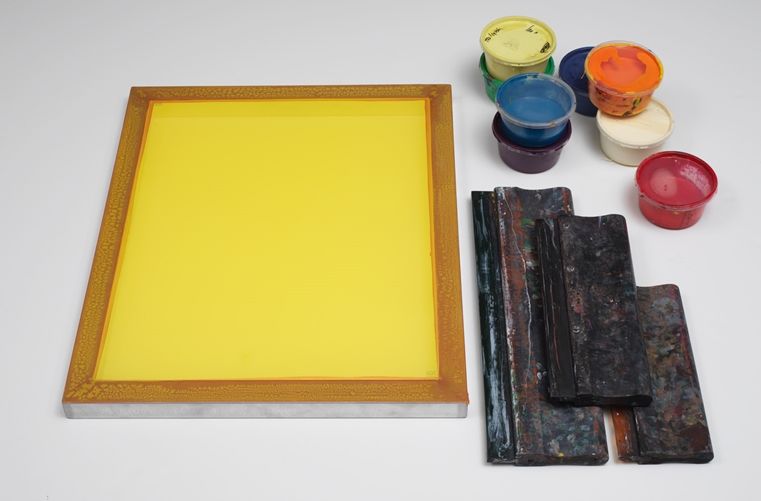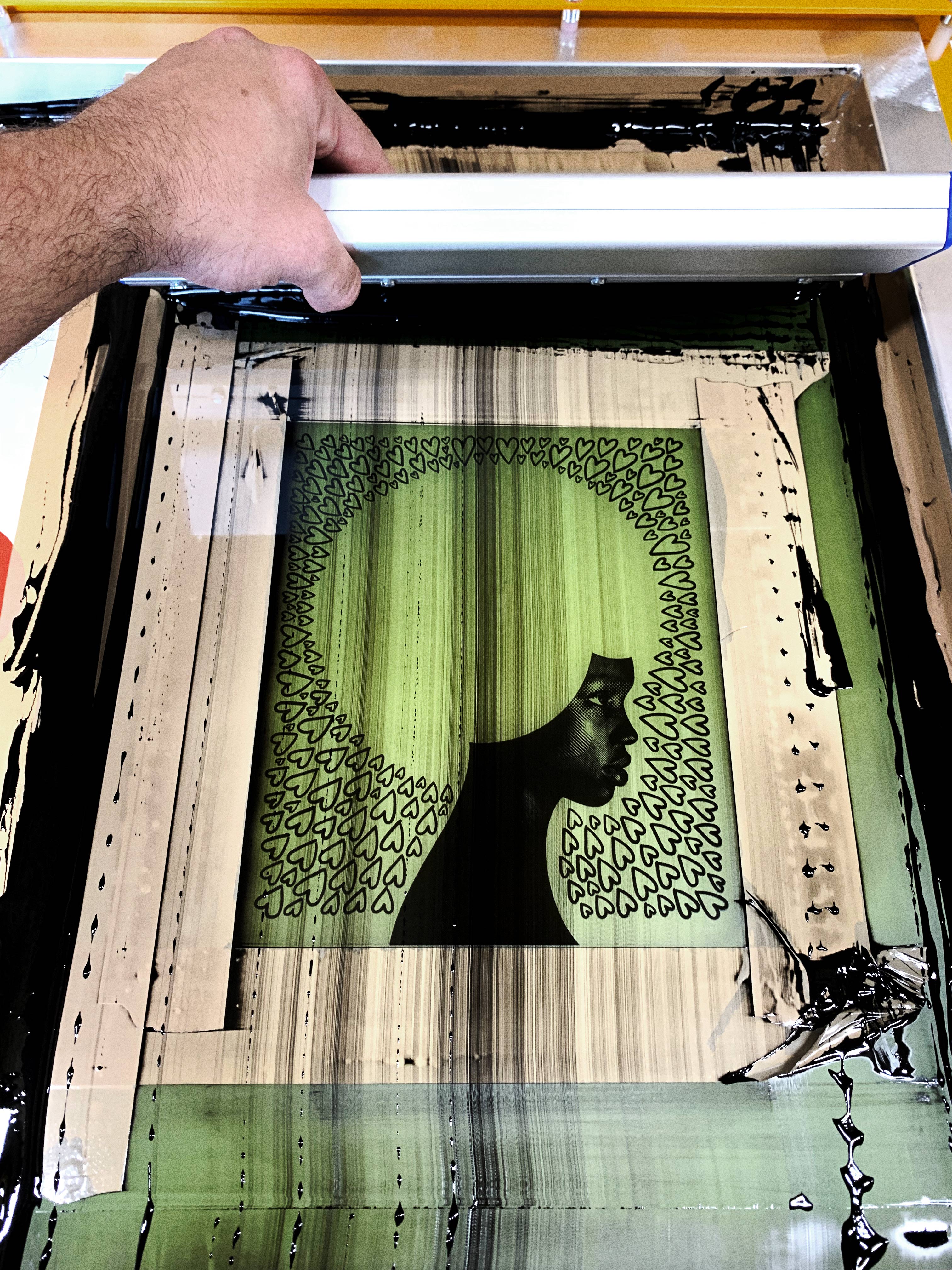ChatGPT said: Why 10:9 Design Screen Printing is perfect for custom t-shirts
The Important Overview to Comprehending Screen Printing and Its Versatile Utilizes
Screen printing has an abundant background that goes back to ancient times, progressing into an advanced technique used across different markets today. This overview checks out the details of the screen printing procedure, detailing its applications in home, advertising and marketing, and fashion decoration - 10:9 Design Company. Recognizing these principles can open creative potential for both creative and industrial tasks. The complying with sections will certainly disclose essential pointers and techniques to boost one's screen printing undertakings
The Background of Screen Printing
Screen printing has roots that map back centuries, its development shows the imaginative and technological advancements of numerous societies. Coming from old China, the technique was originally utilized for decorating textiles and later infect Japan, where it ended up being indispensable to Ukiyo-e woodblock printing. The approach shifted to Europe in the 18th century, where it obtained appeal among craftsmens and business printers. The development of photo emulsion in the 20th century reinvented screen printing, enabling more complex designs and greater efficiency. Musicians like Andy Warhol additionally moved its appeal, using the tool to produce legendary works that blended commercialism and art. By the late 20th century, screen printing had developed itself as a flexible method, used in fashion, advertising, and fine art. Today, it remains to develop, integrating digital technology and increasing its applications across numerous sectors.
The Screen Printing Refine Explained
Screen printing changes imaginative visions right into substantial layouts with a collection of precise steps. At first, a photo is developed and after that transferred onto a screen, commonly made of fine mesh fabric extended over a frame. A light-sensitive solution is related to the screen, which is revealed to light, hardening in locations not covered by the picture. After rinsing the unhardened solution, a pattern is formed.
Next off, the screen is placed over the substrate, whether it be material, paper, or an additional product. Ink is then pressed via the open areas of the pattern using a squeegee, transferring the style onto the substratum below. This process can be repeated for multiple colors, requiring different screens for each color. Lastly, the published thing is healed using warm to guarantee the ink adheres appropriately, leading to a resilient, lively style on-line.
Kinds Of Screen Printing Techniques

Additionally, specialty methods, such as discharge screen printing, eliminate dye from the fabric to produce softer prints, while foil screen printing applies metal aluminum foil to accomplish a shiny coating (10:9 Design Company). Each strategy offers distinctive features, catering to different imaginative demands and manufacturing scales, ultimately broadening the possibilities within the screen printing domain name
Applications of Screen Printing in Different Industries

Additionally, the signage and advertising and marketing fields use screen printing for creating eye-catching displays and banners. This technique permits vibrant colors and intricate styles that capture attention. In electronic devices, screen printing is used for applying conductive inks to circuit card, essential for element links. Moreover, the home decoration sector welcomes screen printing to create unique styles on textiles and wall surface art. Generally, screen their website printing acts as an important tool across varied fields, boosting items with personalized and aesthetically enticing graphics.
Tips for Effective Screen Printing Projects
While taking on a screen printing job, mindful focus to information can significantly improve the last outcome. First, selecting top quality products is necessary; this consists of the screen, inks, and substratums. Using proper mesh counts can influence ink deposition and information resolution. Preparation is equally crucial; comprehensive cleansing of displays and appropriate direct exposure times guarantee crisp prints.
Next off, exact registration is essential for multi-color prints. Making use of alignment tools can assist achieve accurate layering. Furthermore, screening prints on scrap materials before production helps identify potential click for source problems without throwing away resources.

Often Asked Concerns
What Products Are Finest for Screen Printing on Material?
Cotton and polyester blends are optimal for screen printing on fabric due to their sturdiness and ink absorption. Furthermore, specialty textiles like silk or canvas can generate one-of-a-kind structures and coatings, boosting the total layout high quality.
Just how Do I Tidy and Maintain Screen Printing Devices?
To maintain and clean up screen printing tools, one must frequently wash screens with appropriate solvents, examine mops for wear, lube moving components, and store all things in a dry, dust-free environment to prolong their life expectancy.
What Are the Environmental Effects of Screen Printing?
Screen printing can have considerable ecological effects, consisting of chemical waste from solvents and inks, water use during cleansing procedures, and energy consumption. Sustainable methods and environment-friendly products are important for decreasing these adverse results.
Can Screen Printing Be Done in the house Properly?
Screen printing can be efficiently done at home with the ideal materials and strategies. Enthusiasts can create high quality prints, though success depends upon their skill degree, equipment, and understanding of the process entailed.
What Are the Costs Related To Beginning a Display Printing Business?

Beginning a screen printing organization involves costs for custom tin sign printing devices, products, and workspace. Preliminary expenses usually range from a couple of hundred to a number of thousand dollars, relying on the scale, top quality of equipment, and desired production capacity.
Screen printing has a rich history that dates back to old times, advancing right into an innovative strategy made use of across numerous markets today. Another strategy, rotating screen printing, employs round displays, facilitating constant printing on textile rolls, thus enhancing performance for large manufacturings. Furthermore, specialized techniques, such as discharge screen printing, remove color from the fabric to produce softer prints, while aluminum foil screen printing applies metal foil to attain a glossy coating. In the style field, screen printing is commonly utilized to produce dynamic layouts on apparel, enabling brand names to showcase their distinct styles. Cotton and polyester blends are excellent for screen printing on material due to their durability and ink absorption.